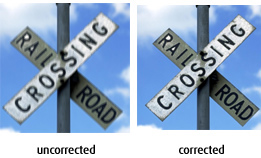Astigmatism is a common vision condition that happens when a person's cornea is not symmetrical. A normal cornea is round like a baseball. With astigmatism, the cornea curves more severely, like a rugby ball.
What Causes Astigmatism?
Astigmatism can come in combination with shortsightedness and longsightedness. Because of its asymmetrical curvature, the astigmatic eye focuses light correctly along one axis, but incorrectly along the other. Light entering the eye is not focused on a single point on the retina, so objects both near and far become blurred or distorted producing an effect similar to looking through a pane of wavy glass.
Symptoms of Astigmatism
An eye care professional may diagnose astigmatism through a variety of tests, including a simple vision test, light refraction test, cornea measurement, or electronically mapping the surface of the eye. Common symptoms of astigmatism include:
-
Objects both near and far appear blurred
-
Inability to read small print
-
Constant squinting of the eyes
Treatments for Astigmatism
Since astigmatism occurs from the uneven distribution of light rays, it's corrected when light rays are focused on a single plane. This is done in a number of ways:
-
Spectacles
-
Contact Lenses: Contact Lenses : PureVision 2 HD for Astigmatism and Soflens Toric for Astigmatism lenses are designed to meet the special vision correction needs of people with astigmatism
-
Astigmatic Keratotomy: Performed through LASIK laser technology (photorefractive keratotomy) or through manual incisions (radial keratotomy), this procedure reshapes the cornea by removing small pieces of tissue from the cornea.